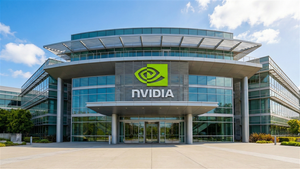MicroCloud Hologram Inc. Develops Neural Network-Based Quantum-Assisted Unsupervised Data Clustering Technology
SHENZHEN, China, May 16, 2025 (GLOBE NEWSWIRE) -- MicroCloud Hologram Inc. (NASDAQ: HOLO), (“HOLO” or the "Company"), a technology service provider, announced the development of a neural network-based quantum-assisted unsupervised data clustering technology, utilizing a hybrid quantum-classical algorithm framework. This framework integrates the classical self-organizing feature map (SOM) neural network with the powerful capabilities of quantum computing, enabling efficient data clustering in an unsupervised manner.
The Self-Organizing Feature Map (SOM) is an unsupervised learning neural network model widely used in fields such as data clustering, dimensionality reduction, and data visualization. Its core concept involves mapping high-dimensional data from the input space to a low-dimensional topological space through a competitive learning algorithm. This process ensures that similar input data points are mapped to adjacent neurons, thereby achieving data clustering.
In classical computing, the SOM algorithm continuously adjusts weight vectors to reasonably group input data within the feature space. However, when dealing with massive datasets, the traditional SOM algorithm faces challenges related to computational complexity and storage demands.
To address the limitations of classical computing in large-scale data clustering, HOLO has introduced quantum computing into the SOM framework, developing a Quantum-Assisted Self-Organizing Feature Map (Q-SOM) model. In this model, the powerful parallel computing capabilities of quantum computing are leveraged to accelerate the weight adjustment and data point mapping processes in SOM. Through quantum parallelism, it becomes possible to process a larger volume of data in a shorter time, thereby reducing the number of computations and overall time consumption.
HOLO's technology leverages the quantum superposition and quantum entanglement properties of quantum computing, enabling the results of each clustering computation to be processed in parallel across multiple qubits. This quantum parallel computing approach not only significantly enhances computational efficiency but also demonstrates superior computational power compared to classical computing in certain scenarios.
HOLO believes that quantum computing does not entirely replace classical computing but rather works in tandem with it. In this technology, the quantum component is primarily responsible for accelerating the data point mapping and weight adjustment processes within the SOM network, while the classical component handles post-processing of results and the final decision-making for data clustering. This hybrid architecture fully exploits the respective strengths of quantum and classical computing, theoretically enabling more efficient clustering.
By incorporating quantum computing, each iteration of the SOM network can be completed more quickly, significantly reducing the number of computations required during the clustering process. Furthermore, the interference properties and noise tolerance of quantum computing provide additional robustness and reliability to the model.
HOLO’s neural network-based quantum-assisted unsupervised data clustering technology, leveraging the advantages of quantum computing, exhibits significant technical strengths:
Computational Efficiency: Through quantum parallelism, it can significantly reduce the time cost of clustering computations. Particularly when dealing with large-scale data, quantum computing can handle more data points and quickly converge to optimal solutions.
Data Processing Capability: The quantum-assisted algorithm can process higher-dimensional data. Especially when tackling complex high-dimensional datasets, quantum computing accelerates the data mapping process, reducing the complexity of high-dimensional computations.
Accuracy and Stability: Compared to classical methods, quantum computing demonstrates higher accuracy and stability in addressing certain nonlinear and highly complex problems. Through quantum entanglement and superposition effects, it can avoid some of the local optima issues encountered in classical algorithms.
Wide Applicability: This technology is not only suitable for data clustering but can also be extended to various fields such as image processing, natural language processing, and financial data analysis. As quantum computing technology advances, more industry applications will become feasible in the future.
The integration of quantum computing and machine learning marks the advent of next-generation computing technology. By developing quantum-assisted neural network technology, HOLO not only achieves breakthroughs in the field of data clustering but also drives progress across multiple industries. Particularly in areas such as big data, artificial intelligence, and financial technology, the introduction of quantum computing will fundamentally transform data processing methods and provide new solutions for tackling complex problems.
In the future, as quantum computing technology continues to mature, quantum-assisted machine learning algorithms will play an increasingly important role across multiple industries. Especially in fields with extremely high demands for computational speed and precision—such as quantum supremacy experiments, drug discovery, and climate change prediction—the integration of quantum computing and machine learning will unlock unprecedented potential.
HOLO’s breakthrough in neural network-based quantum-assisted unsupervised data clustering technology provides new perspectives for interdisciplinary research in quantum computing and artificial intelligence. With ongoing technological optimization and advancements in quantum computing hardware, quantum computing is poised to achieve practical applications in a broader range of fields, driving technological innovation and societal progress. Through continuous development and application of this technology, HOLO will inject new momentum into global data analysis, decision-making support, and the advancement of artificial intelligence.
About MicroCloud Hologram Inc.
MicroCloud is committed to providing leading holographic technology services to its customers worldwide. MicroCloud’s holographic technology services include high-precision holographic light detection and ranging (“LiDAR”) solutions, based on holographic technology, exclusive holographic LiDAR point cloud algorithms architecture design, breakthrough technical holographic imaging solutions, holographic LiDAR sensor chip design and holographic vehicle intelligent vision technology to service customers that provide reliable holographic advanced driver assistance systems (“ADAS”). MicroCloud also provides holographic digital twin technology services for customers and has built a proprietary holographic digital twin technology resource library. MicroCloud’s holographic digital twin technology resource library captures shapes and objects in 3D holographic form by utilizing a combination of MicroCloud’s holographic digital twin software, digital content, spatial data-driven data science, holographic digital cloud algorithm, and holographic 3D capture technology. For more information, please visit http://ir.mcholo.com/
Safe Harbor Statement
This press release contains forward-looking statements as defined by the Private Securities Litigation Reform Act of 1995. Forward-looking statements include statements concerning plans, objectives, goals, strategies, future events or performance, and underlying assumptions and other statements that are other than statements of historical facts. When the Company uses words such as “may,” “will,” “intend,” “should,” “believe,” “expect,” “anticipate,” “project,” “estimate,” or similar expressions that do not relate solely to historical matters, it is making forward-looking statements. Forward-looking statements are not guarantees of future performance and involve risks and uncertainties that may cause the actual results to differ materially from the Company’s expectations discussed in the forward-looking statements. These statements are subject to uncertainties and risks including, but not limited to, the following: the Company’s goals and strategies; the Company’s future business development; product and service demand and acceptance; changes in technology; economic conditions; reputation and brand; the impact of competition and pricing; government regulations; fluctuations in general economic; financial condition and results of operations; the expected growth of the holographic industry and business conditions in China and the international markets the Company plans to serve and assumptions underlying or related to any of the foregoing and other risks contained in reports filed by the Company with the Securities and Exchange Commission (“SEC”), including the Company’s most recently filed Annual Report on Form 10-K and current report on Form 6-K and its subsequent filings. For these reasons, among others, investors are cautioned not to place undue reliance upon any forward-looking statements in this press release. Additional factors are discussed in the Company’s filings with the SEC, which are available for review at www.sec.gov. The Company undertakes no obligation to publicly revise these forward-looking statements to reflect events or circumstances that arise after the date hereof.
Contacts
MicroCloud Hologram Inc.
Email: IR@mcvrar.com

More News
View More




Recent Quotes
View More
Quotes delayed at least 20 minutes.
By accessing this page, you agree to the Privacy Policy and Terms Of Service.